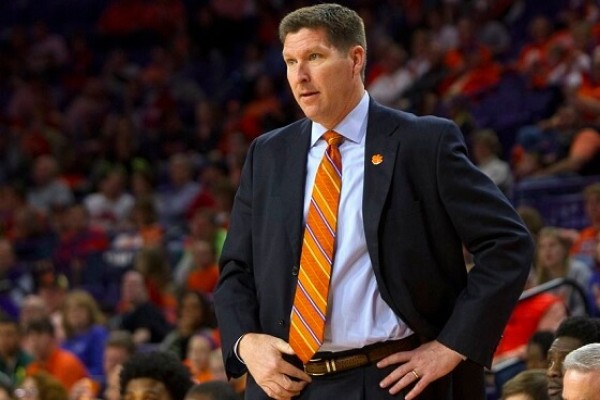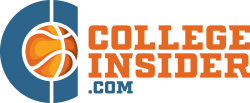The Art of Scheduling
Coast To Coast : The Art of Scheduling
Print

Brad Brownell (Clemson) had three mid-major schools on his schedule, which could all win 20 games.
Early in his coaching career, Martin Ingelsby learned an important lesson from Mike Brey. Ingelsby’s final season playing for Notre Dame, 1999-2000, was Brey’s first as coach. Three years later Ingelsby joined his former coach’s staff.
“When I got the job at Notre Dame, coach Brey told me you want to be successful in this business remember three things,” Ingelsby said. “‘Recruiting, Scheduling and Recruiting.’ If you’re good at those three things you have a chance.”
Through the years, the phrase has been attributed to the late Jim Valvano, who was indeed the master of the one-liner. Regardless the origin, the straightforward view remains true today. While recruiting is the backbone of every program, the schedule the players face once they arrive plays a critical role in a program’s success and a coach’s future.
If only it was so easy to build a schedule.
Ingelsby assumed command of crafting the Fighting Irish’s schedule early on, enjoying a $700,000 annual budget to purchase opponents for nonconference home games, which are commonly known as ‘guarantee’ or ‘buy’ games.
Now, in his second season as head coach at the Colonial Athletic Association school Delaware, Ingelsby sits on the opposite end of the paychecks. The Blue Hens received guarantees this season from trips to Richmond and Bradley. He’s hopeful the program won’t need to pursue the guaranteed money in the future but also doesn’t plan to eliminate the option. A trip to face an ACC or Big East power might be a good test for a veteran team while also helping fund one of Delaware’s non-revenue sports, such as golf or tennis.
Ingelsby’s task is to grow the home schedule - which he has from 12 games in his first season to 16 next season - and find games against good opponents that his team had a good chance to win.
Scheduling is complex. It’s an art and not a science. And it evolves from season-to-season and program-to-program.
“You have to craft your schedule to fit your team,” he said. “Do you schedule up based on a returning group of guys that you feel like you want to challenge them or do you schedule down a bit because you want to give some younger guys confidence. You learn from winning. There’s no better feeling than being 1-0.”
As January turns to February, the Ratings Percentage Index and other advanced metrics will dominate the conversation. RPI and strength of schedule matter to teams pursuing the 36 at-large bids to the NCAA tournament and NIT. Programs in the early stages of development or on the rebuild could not care less about those metrics.
One size does not fit all
Cliff Ellis has seen the scheduling equation from every possible angle during his 40 years as a head coach. During 20 years at Clemson and Auburn, he had the budget to buy guarantee games and remain close to home. For example, during his final season there, 2003-04, the Tigers played 11 conference games - nine were on their home floor, one was a true road game and one was in nearby Huntsville.
Ellis has spent the last 11 years at Coastal Carolina, located in Conway, S.C. The men’s basketball program has an annual budget of $1.8 million. The Chanticleers enjoyed seven home games in the current season, which is better than average for a Sun Belt Conference member. They welcomed Wake Forest of the ACC to the HTC Arena but the home slate also included three non-Division I opponents.
“We’ve always here tried to play Power 5 teams, you never know, our philosophy is to give our guys enough tough games to be ready for conference play,” Ellis said. “I think individually you have to know what you have.”
Through Jan. 15th, KenPom.com rated Coastal’s nonconference schedule the 157th most difficult in the nation, ranking it third among Sun Belt teams. Its' overall strength of schedule per the RPI was 161st, which was second in the conference.
Ellis tries to play an exempt tournament early each season because playing games on successive days helps prepare his team for the conference tournament in March and ultimately the SunBelt, which is typically ranked in the low teens in the RPI, sends only its automatic qualifier to the NCAA tournament.
There’s not a magic formula where mandates can be handed down above. Conferences like the Colonial reward teams based on their RPI to provide incentive for building a more difficult schedule, but each coach has to make those decisions within the framework of what’s best for his program.
“It’s not feasible, everybody has to be on board with doing it, some are worried about RPI and when I took over the program I’m just trying to win games,” Ingelsby said. “I don’t think it’s viable to be honest with you. I’d be very much against that in our league.”
Like the veteran Ellis, the Clemson coach Brad Brownell has split his career between the mid and high-major levels, spending eight years at UNC Wilmington and Wright State before taking over the Tigers prior to the 2010-11 campaign.
Building confidence early can be more important for a young team than worrying about the strength of schedule.
“It’s a long season,” Brownell said. “If you’re beat up in November and December, it’s hard to survive. Sometime the teams that are in the low level leagues have to play six or seven guarantee games it’s hard to overcome that. When you have a good team at a mid-major level you might try something really hard.”
LaSalle coach John Giannini sees the scheduling equation as three-pronged: 1. If you think you have a postseason caliber team, try and find as many top 100 or top 50 games as possible. 2. If you don’t think you have a postseason team, try and schedule games you can win. 3. If you are in a traditionally one-bid league and think you have a strong team, consider playing a really tough schedule to prepare your team for league play.
“In the Atlantic 10, we think we can finish third through sixth and get an NCAA or NIT bid,” Giannini said. “We want to schedule teams we think we will win a lot of games. The key to the math of the RPI is to play teams that you think are going to have good records. It doesn’t matter what conference they are in. Sometimes it’s better for us to play a top team from the America East than a low level team from the ACC.”
Rich Zvosec, a former coach at UMKC, has spent the last eight years as a television analyst for Missouri Valley Conference television broadcasts. Zvosec lured Oklahoma State, Colorado and Kansas State to the Kangaroos’ home court during his tenure as coach, via 2-for-1 arrangements (trading two road games for one home game). Those deals are rare in this era.
Zvosec sees three factors in play when trying to balance a schedule: Finding a competitive edge, building an attractive home schedule and working within budgetary constraints, such as the need to go on the road for a guaranteed check.
While it’s easy to criticize a rivals schedule from the outside, each situation is unique.
Just look at three programs during the 2017-18 season.
Duquesne, N.C. State and Georgetown all had new coaches this season and played nonconference schedules ranked 340th (out of 351) or worse by KenPom.com. The three new coaches decided their teams needed to win games and build confidence early. On the surface, the strategy worked.
Duquesne is 13-5 overall and 4-1 in the Atlantic 10, on the verge of clinching the first winning season since 2010-11 which was also the last time they finished above .500 in the conference. N.C. State, coming off consecutive losing seasons, has wins over Arizona, Duke, Penn State and Clemson. Georgetown played the easiest nonconference schedule in the nation but is 12-5 overall and 2-4 in the Big East, giving coach Patrick Ewing a chance to post the school’s first winning season since 2015.
The better you are, the harder it can be
Elon returned all five starters this season from an 18-win team. The Phoenix are playing their final season in cozy Alumni Gym, which can become quite noisy and create a daunting environment for an opponent.
Finding teams to play home or away was a challenge for coach Matt Matheny during the offseason. The summer before, the Phoenix landed a home-and-home series with South Florida of the American Athletic Conference because the program was desperate for games. Elon wasn’t able to find any similar offers this year, Matheny said.
His team opened the season playing a guarantee game at Duke and sometimes, there are things that are out of a team’s control. When another team received a more lucrative offer and backed out of an exempt event, Elon ended up playing Division II Concordia (MN).
When Brownell took over UNC Wilmington in 2003, the program was fresh off an NCAA tournament appearance. They won another in 2006, and with a loud, often sold out home arena on a campus tucked on the Southeastern coast of North Carolina, attracting quality opponents was a chore.
“It was impossible to get anybody to come to Trask. We won (a preseason) tournament in Wyoming and had to stay two days to play Colorado. Won the tournament and didn’t have much left. But to get to Colorado to come to Trask that was a sacrifice we were willing to make.
The Future
Schools from the Power 5 conferences (ACC, Big 10, Big 12, Pac 12 and SEC) received 84 percent of the at-large bids to the last three NCAA tournaments compared to 70 percent in the previous three years.
The Big Ten expands its regular season schedule from 18 to 20 games next year. The ACC had a 16-game regular season in 2011-12, expanded to 18 games the next season and goes to 20 games in 2019-2020. Add a rivalry nonconference game, special event such as the Big Ten - ACC Challenge and exempt tournament, like the Maui Invitational or Charleston Classic, and there’s not much room for creative scheduling. Teams have to fill the remaining five or six spots with home games to fulfill season ticket package expectations. Opportunities for mid-majors will continue to diminish.
“It’s just going to get worse,” Zvosec said. “They’re all going to go to 20 games. It’s squeezing teams out. How can you get a second team in or get a higher seed for your first team? Have a real good team.”
Clemson’s nonconference schedule this season proves some of the power conference teams are willing to give the top mid-major programs a chance, at least. The Tigers played guarantee games against UNC Asheville, Wofford, La. Lafayette - all teams expected to vie for a 20-win season and their conference championship.
“You can’t predict all of it,” Brownell said. “When we scheduled Samford we thought that was going to be a good game. But they had a really good player get hurt.”
There are solutions for mid-major coaches who want to challenge their teams in November and December.
The top mid-majors should continue to schedule each other during the nonconference season. Florida Gulf Coast and Middle Tennessee, who have both won multiple NCAA tournament games in the last six years, played a home-and-home series against each other this season. Belmont and Middle Tennessee played. Towson and Oakland, two mid majors expected to finish near the top of the Colonial and Horizon conference, respectively, played each other. Sun Belt favorite UT-Arlington played at perennial Missouri Valley Conference power Northern Iowa.
Another recent trend is mid-major centric in-season exempt tournaments which create multiple games on a neutral court. Northern Kentucky and Vermont, both 2017 NCAA tournament participants, met in the Bahamas in November. The eight-team event included MAAC power Iona and James Madison from the Colonial, which is routinely ranked 11th to 15th in the RPI ratings.
Georgia Southern, Missouri State, Penn and Towson were among the participants in a similar eight-team early season event in Florida.
Another option for mid-majors is to hit the road and earn two or three guarantee checks, then draw from those funds to buy a home game or two. This requires cooperation between coaches and their administration.
Bottom line? There’s no scheduling code to crack. Build a good program, play as many games as possible against good teams you can beat and hope for a little luck along the way.



